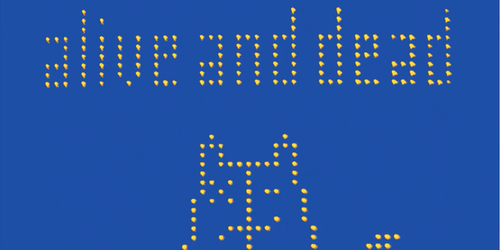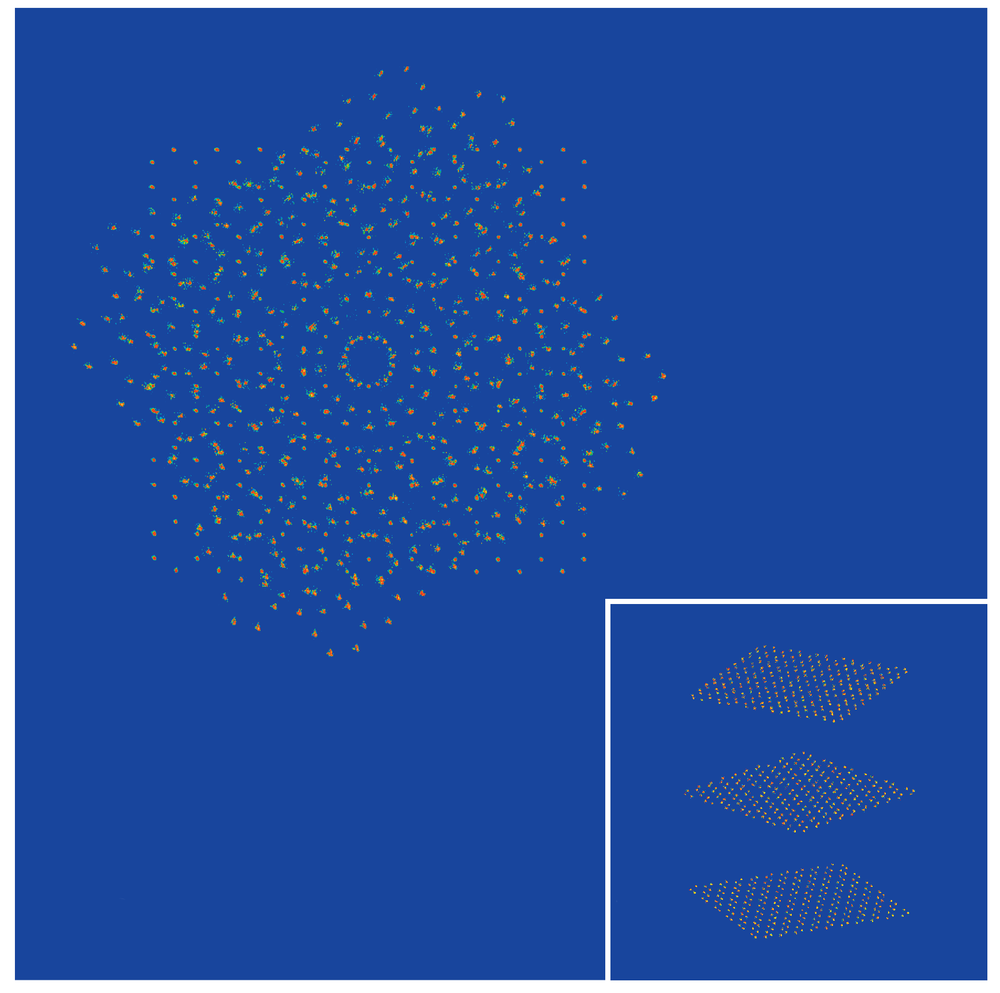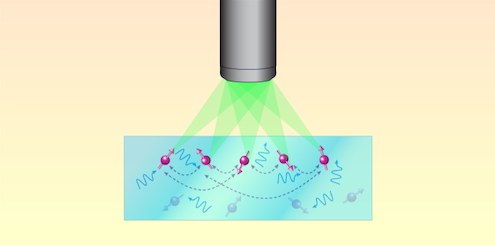August 8, 2025• Physics 18, 148
To demonstrate a new system for rapidly rearranging thousands of atoms, researchers produced an animation featuring Schrödinger’s famous feline.
This movie shows rubidium atoms being moved around in an array of optical tweezer traps to form one image after another. The movie is slowed down by about 33 times.
One potential type of quantum computer would be based on atoms held in one or more 2D arrays of optical traps. Each atom would constitute a quantum bit, and computations would involve moving around large numbers of these atoms within an array. Such atom rearrangements can be slow because atoms have to be shuffled in and out of array sites—like a complicated game of Chinese checkers.
Chao-Yang Lu and Jian-Wei Pan of the University of Science and Technology of China and their colleagues have now used artificial intelligence (AI) as part of a system that can move thousands of atoms into any arrangement they choose [1]. The rearrangement takes just 60 milliseconds—regardless of the number of atoms—a speed record that is partly attributable to AI, which is faster than conventional computation for this task. In the setup, AI is involved in programming the spatial light modulator, the device that moves the atoms along the optimal paths using optical tweezers.
To show off their new system, the team created a cartoon video describing the Schrödinger-cat thought experiment. The researchers used up to 549 atoms in a 230 × 230-µm array and imaged their positions by detecting the atoms’ fluorescence in response to laser pulses. The video is a slowed-down version of the atomic rearrangements.
Multilevel marketing. To “advertise” the system’s capabilities, the team produced this image showing the complicated yet precise arrangement of atoms in three horizontal layers, shown from above, where each layer mimics a sheet of graphene (inset).
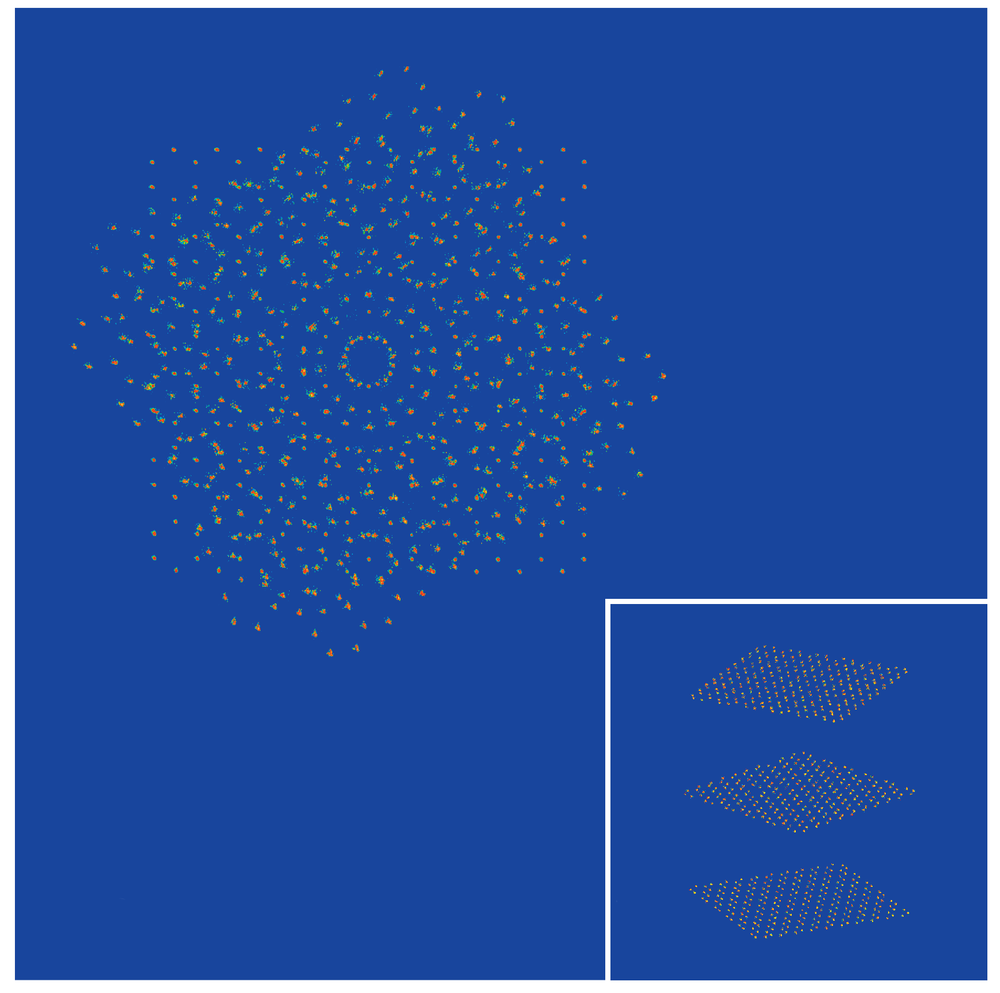
Multilevel marketing. To “advertise” the system’s capabilities, the team produced this image showing the complicated yet precise arrangement of atoms in three horizontal layers, shown from above, where each layer mimics a sheet of graphene (inset).×
–David Ehrenstein
David Ehrenstein is a Senior Editor for Physics Magazine.
References
- R. Lin et al., “AI-enabled parallel assembly of thousands of defect-free neutral atom arrays,” Phys. Rev. Lett. 135, 060602 (2025).
AI-Enabled Parallel Assembly of Thousands of Defect-Free Neutral Atom Arrays
Rui Lin, Han-Sen Zhong, You Li, Zhang-Rui Zhao, Le-Tian Zheng, Tai-Ran Hu, Hong-Ming Wu, Zhan Wu, Wei-Jie Ma, Yan Gao, Yi-Kang Zhu, Zhao-Feng Su, Wan-Li Ouyang, Yu-Chen Zhang, Jun Rui, Ming-Cheng Chen, Chao-Yang Lu, and Jian-Wei Pan
Phys. Rev. Lett. 135, 060602 (2025)
Published August 8, 2025
Subject AreasAtomic and Molecular PhysicsRelated Articles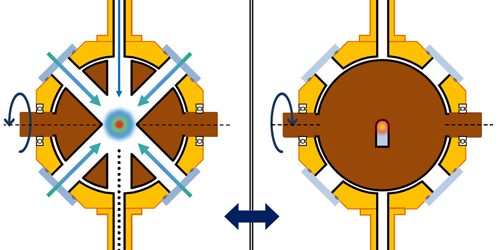
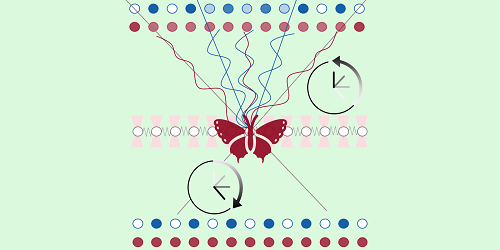 Atomic and Molecular PhysicsQuantum Scrambling Goes AnomalousJuly 31, 2025
Atomic and Molecular PhysicsQuantum Scrambling Goes AnomalousJuly 31, 2025
Evidence that quantum information can get scrambled unconventionally in a chain of atoms could improve our understanding of quantum many-body dynamics. Read More »
